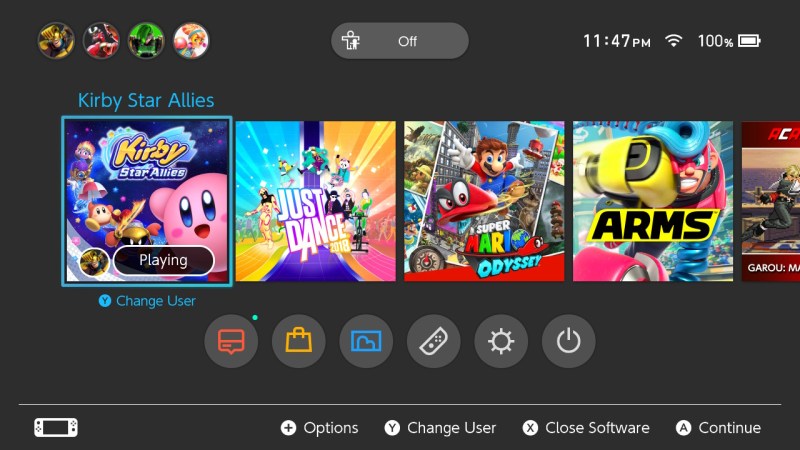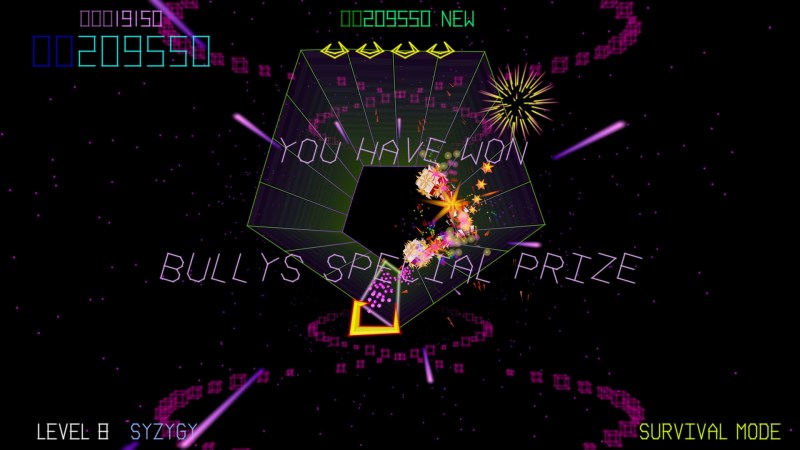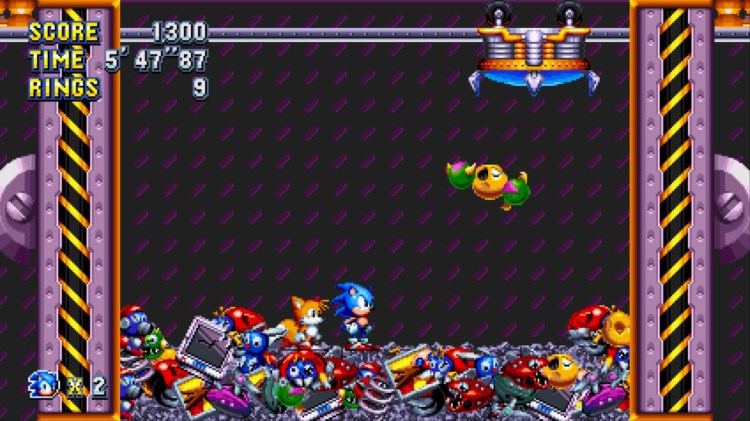Sorry, cartridge and disc collectors — in the foreseeable future, console gaming is going to become either download only or download first. This might bother some console gamers, but I’m excited to see this happen.
Twenty years ago, I owned one of the country’s largest personal collections of console games. After heading up the Ziff-Davis magazine Intelligent Gamer, I’d filled two separate rooms with obscure consoles, cartridges, and arcade boards from around the world. My apartment looked a little like the Sonic Mania photo above, with forgotten electronics spread across floors and shelves. Once I realized that I’ve never play most of these items again — and that I’d be moving for grad school — I sold everything off, freeing myself in a way that even current eBay prices can’t make me regret.
Since then, I’ve tried to avoid amassing space-consuming physical media. When iPods became capable of storing hundred-CD collections in pockets rather than on shelves, I jumped right in. Later, an iPad reduced many of my books, videos, and games into the footprint of a single magazine. Though I still have fond memories of the physical publications I once created, I’m ready for them — and all of my media — to be fully digital.

Above: Enjoying magazines and books in purely digital format has multiple advantages, including instant access to your entire library — anywhere.
Though console makers have taken tentative steps in this direction, they’ve been unable to ditch physical media. Understanding why requires a games industry master’s degree, including an appreciation for the traditions of retail distribution to international broadband differences and concepts, such as inertia and cooperative marketing. (Since game companies don’t participate in the resale market, collectibility generally isn’t a major factor.)
Apple didn’t flinch when ditching physical distribution dogma for its iTunes and App Stores, but Microsoft, Nintendo, and Sony aren’t brave enough to declare themselves digital only and stop issuing games on discs and cartridges. Competitions to have the largest monthly physical game sales totals guarantee that no vendor will unilaterally disarm by cutting off retailers. So they’re probably going to wait until brick-and-mortar game retailing is on the edge of collapse — RIP, Toys ‘R’ Us — before making machines without optical drives or cartridge slots.

Above: Even Nintendo has a digital game pricing and distribution strategy at this point — though it’s a mess compared with rivals Sony and Microsoft.
That said, each console maker has spent years preparing for a digital-first era (though Nintendo seemingly had to be dragged into it kicking and screaming and still lags its rivals). Today, the PlayStation, Xbox, and Switch platforms all have storage space for digital games, online stores that permit infinite software re-downloads, and enough publishers familiar with digital marketing to make a transition away from physical retailing. But a few key factors still need to be addressed before consoles go digital only.
- International support. U.S. users take (virtually) unlimited broadband service for granted, but in many countries, home Internet access is capped and overages cost extra. As console games routinely require five or more gigabytes, one game download can kill a customer’s monthly bandwidth allotment, making digital downloads challenging in some countries. Unnecessarily large patches of disc-based games are already creating problems for data-limited users.
- Storage space. The Switch ships with 32GB of storage. Both PlayStation 4 models now come only in 1TB capacities, and Xbox One currently ranges from 500GB to 1TB. But only a 2TB or larger hard drive will be sufficient to hold the average gamer’s lifetime purchases for a given console. Since most gamers buy the lowest-priced, lowest-capacity versions of consoles, going digital-only generally means supplying your own additional storage solution later. Though this is easier on each platform than it was in the past, it’s still not ideally implemented by any console maker. (Don’t get me started on Nintendo’s latest “Internet download required” cartridges, like Wolfenstein II, either.)
- A proper digital-first pricing structure. Currently, console makers — especially Nintendo — tend to hold digital game prices hostage to physical game prices. That doesn’t make sense. Digital games have no manufacturing costs and don’t include box art, boxes, or manuals. They can’t be resold and rarely migrate between generations of a given platform. Compared with a physical disc or cartridge, charging $60 for a digital game that the customer will pay to download and store — then can’t resell — is just stupid. Adding insult to injury, physical games often see day-one discounts at Amazon and Best Buy, making them cheaper than digital versions. This insanity has to end: Digital games need to be around 25 percent cheaper than physical versions or have resale rights.
Console makers should learn from what Apple has done over the last decade because it has solved virtually all of these problems. It pushes developers to keep file sizes small, encourages partial rather than full-sized patches, and offers multiple storage capacities for each of its devices. In addition to encouraging lower, mass-market software prices to begin with, Apple also lets developers change their game prices at will, offering brief discounts at launch or even increasing prices after adding new content.
Though there have certainly been growing pains and negatives impacting the size and quality of iOS titles, the benefits of Apple’s strategy have been numerous and gigantic. Customers can get the latest games without going to a store, pay more of the purchase price to the developer than a middleman, and avoid switching little cards or discs all the time. Once you go all-digital, it’s hard to go back to carrying cartridges — a fact that compelled me to add a big microSD card to the Switch. And it’s much easier to make an impulse buy from an online store than a physical retailer.

Above: Tempest 4000 is an example of a digital-only release not planned for physical sale. In addition to selling this game for PlayStations and PCs, publisher Atari plans to launch a new Atari VCS console without cartridges or discs this year.
On a portable platform, it’s so much easier to just go to a menu and choose a game to play than having to fumble through and swap game cards. For the PlayStation 4 and Xbox One, going all digital means running your system near silently as the optical drive doesn’t need to be spinning and not needing to get up just to swap discs that are only being used to authenticate content that’s either been partially installed or wholly patched to sit on the machine’s hard drive, anyway.
For users, the single biggest hurdle becomes figuring out what initial price is worth paying for a game that can never be resold. All it takes is a couple of disappointed kids with a $60 Kirby Star Allies to realize that Nintendo’s digital pricing formula really needs to change. On the PlayStation and Xbox, however, routine weekly online game sales make it easy to quickly download great games at reasonable prices.
Old-school collectors might miss accumulating boxes, manuals, and physical media, particularly if they hope to cash out someday on eBay. But anyone who actually enjoys playing games will quickly realize that the convenience of access to an all-digital collection is comparatively priceless.

